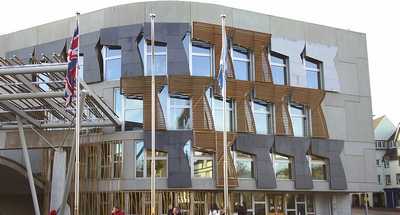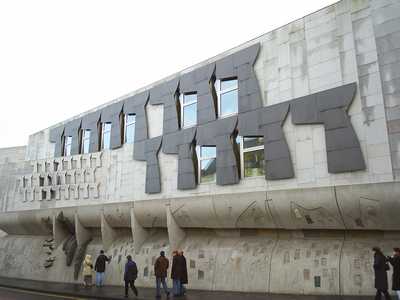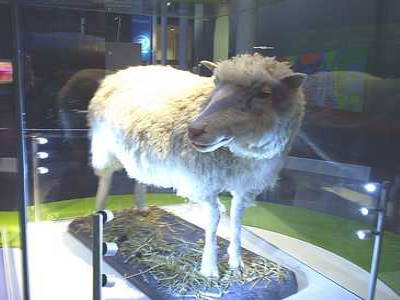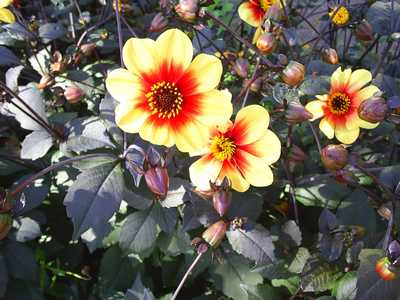Attractions
Edinburgh CastlePalace of HolyroodhouseEdinburgh Museums and GalleriesThe Scottish ParliamentEdinburgh ZooRoyal Botanic GardenOur Dynamic EarthFestivals and EventsEdinburgh Ghost ToursNelson MonumentRoyal Yacht BritanniaEdinburgh MapEdinburgh QuizLinksThe Scottish Parliament
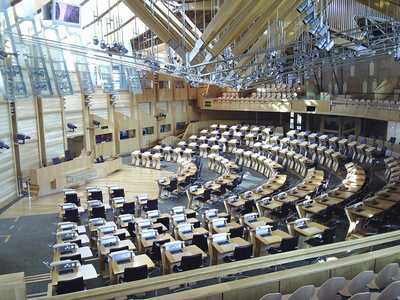
Main Chamber
In 1707, under a Treaty of Union, the separate Kingdoms of Scotland and England came together to form the new Kingdom of Great Britain. The earlier parliaments of Scotland and England were dissolved and replaced by a new UK parliament based at Westminster in London.
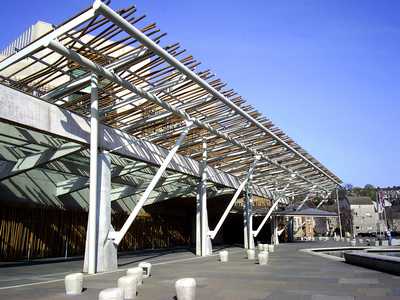
Entrance
Following a referendum in 1997, the people of Scotland voted in favour of the creation of a new Scottish Parliament. While Westminster continues to remain the supreme UK parliament, it has devolved to the Scottish Parliament various powers that are exercised through its 129 MSPs (Members of the Scottish Parliament). Matters that are not devolved to the Scottish Parliament and which continue to be dealt with by Westminster are called "reserved" matters. The first meeting of the Scottish Parliament took place on 12 May 1999.
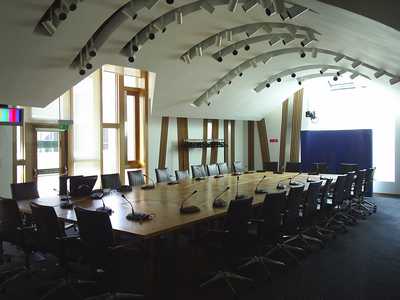
Committee Room
MSP's are elected for four years and the fifth elections to the Scottish Parliament took place on Thursday, 5 May 2016. This was the first parliamentary election in Scotland in which 16 and 17 year olds were allowed to vote. With 129 seats up for grabs, the result was as follows:-
| Party | Leader | MSPs |
|---|---|---|
| Scottish National Party (SNP) |
Nicola Sturgeon |
63 |
| Scottish Conservative and Unionist Party |
Ruth Davidson |
31 |
| Scottish Labour |
Kezia Dugdale |
23 |
| Scottish Green Party |
Patrick Harvie |
6 |
| Scottish Liberal Democrats |
Willie Rennie |
5 |
| No Party Affiliation (Ken Macintosh MSP, Presiding Officer) |
1 |
The outcome was that the SNP lost its overall majority at Holyrood and now needs to work with the other smaller parties to ensure its legislative programme can be pushed through.
Nicola Sturgeon was re-elected as First Minister of Scotland on 17 May 2016.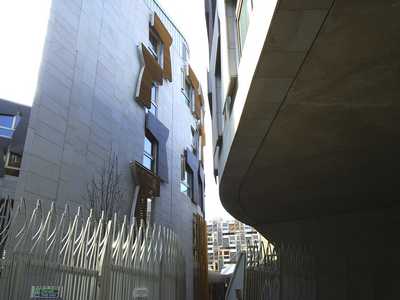
Scottish Parliament Building
The Scottish Parliament Building - Love it or loath it, you can't ignore it.
- Cost - £414 million (ten times over original budget!)
- Architect - The late Enric Miralles from Catalonia, Spain
- Opened - September 2004
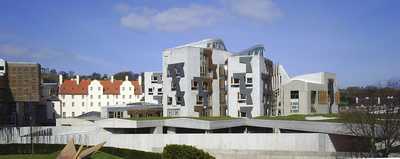
View from the south
Visiting the Parliament
Access to the Scottish Parliament is free. There is airport style security at the entrance, but once inside visitors can experience at first hand the architictural splendours of the building.
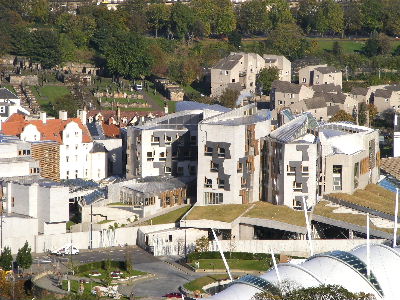
View from Salisbury Craggs
Information about visiting the Scottish Parliament can be found here:-
http://www.parliament.scot/visitandlearn/24228.aspx

Frontage
There is also an exhibition about the parliament as well as a creche (booking advisable), a shop and a cafe.
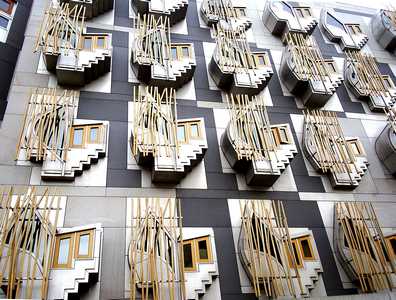
Windows to rear of Scottish Parliament
The Scottish Parliament is normally open to visitors Monday to Saturday 6 days a week. Further information can be found by clicking here:-
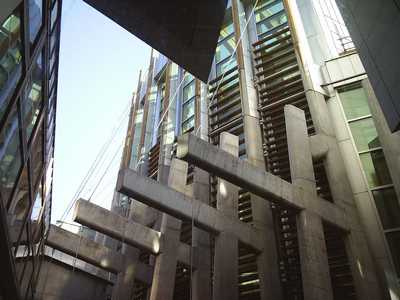
Supports to rear of main building
Members of the public can also attend Scottish Parliamentary debates, Committee meetings and First Minister's Question Time. For further information click here:-
http://www.parliament.scot/visitandlearn/24232.aspx
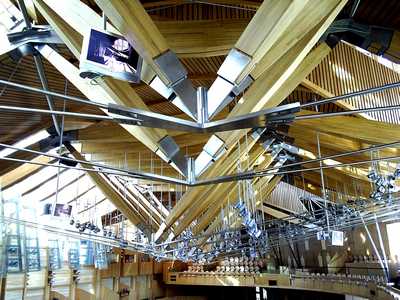
Support beams in the Main Chamber
Along the Canongate side of the building there are many inscribed stone plates with Scottish sayings and poems like the one shown below.
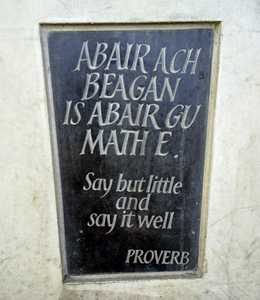
Insert on Canongate frontage
One of the best things about the Scottish Parliament building is that, like Edinburgh itself, there is always something new and unusual to discover around virtually every corner. And the more often one visits the building, which has become a major Edinburgh attraction in its own right, the more there seems to be to appreciate and enjoy.
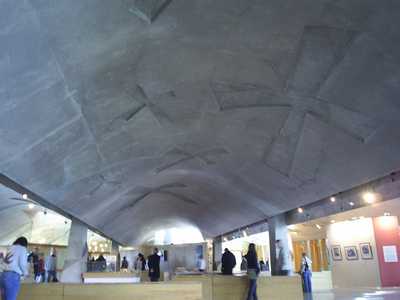
Entrance hall and exhibition area
The initial estimate for the Scottish Parliament was put at between £10 and £40 million. However, the final cost was a staggering £414 million, more than ten times over budget. The award winning Catalan Architect, Enric Miralles, also died tragically in 2000 of a brain tumour, aged just 45, during the course of the Parliament's construction. Meanwhile, the intended 2001 opening date also slipped back to 2004.
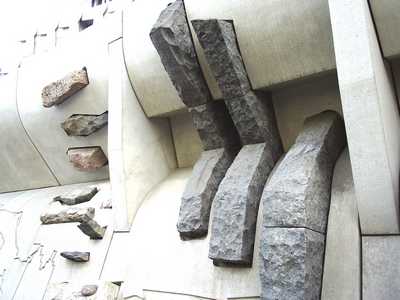
Inserted stonework on Canongate frontage
As might be imagined, the runaway cost of the parliament generated huge public controversy within Scotland. In an attempt to get to the root of what had gone wrong, a major public inquiry was held under the chairmanship of Lord Fraser of Carmyllie.
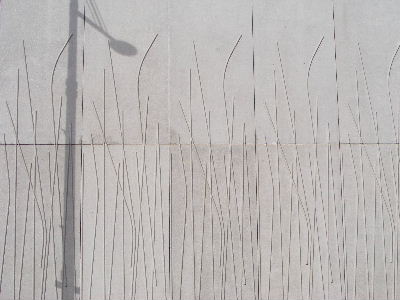
Reflection on concrete wall to rear of Scottish Parliament
In his report Lord Fraser said that while he had a number of sharp criticisms and recommendations to make on matters that ought to have been much better understood, he concluded that there was no single villain of the piece. He highlighted however that some catastrophically expensive decisions had been taken, principal among which was the decision - not cleared with Ministers - to follow the procurement route of construction management.
